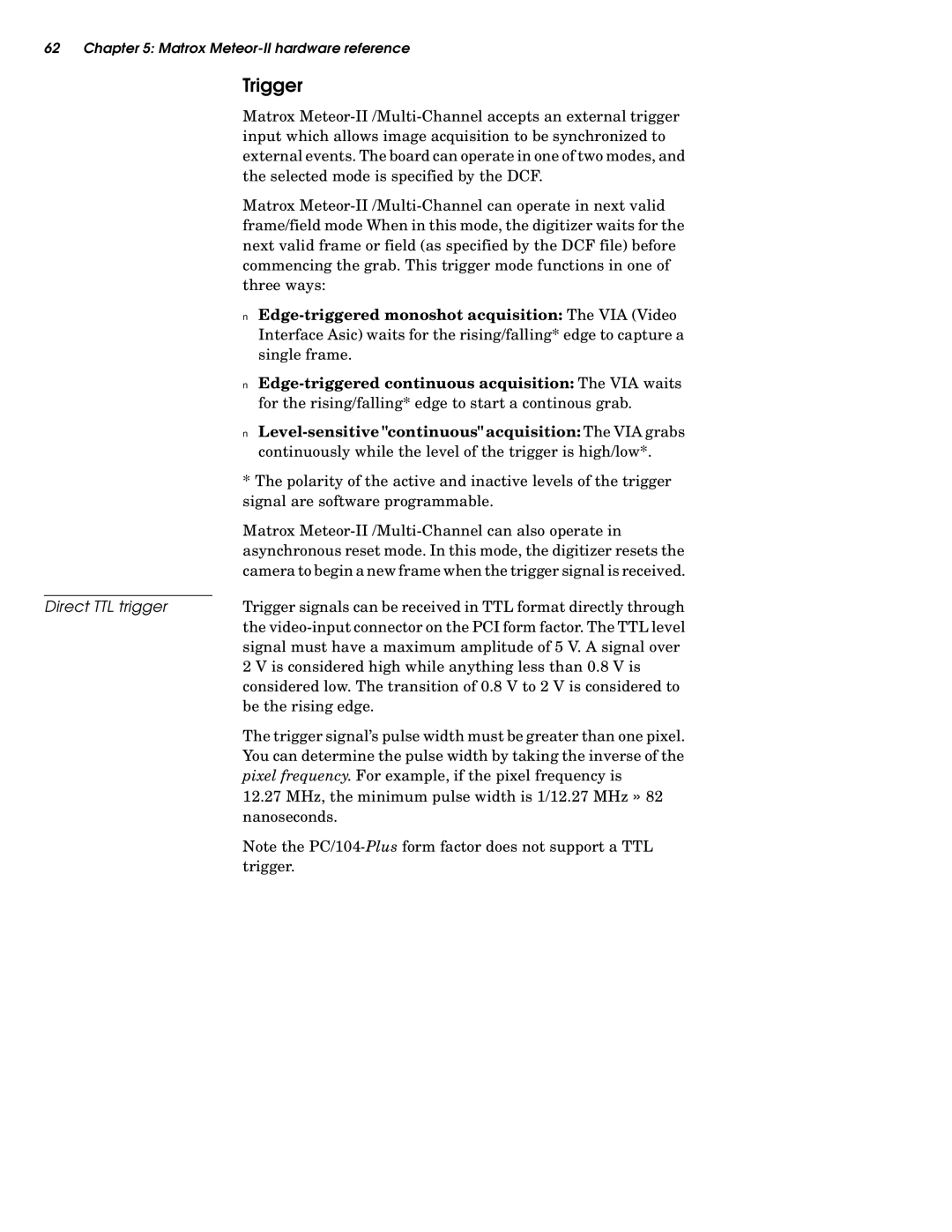62 Chapter 5: Matrox
Trigger
Matrox
Matrox
| ■ |
|
|
| Interface Asic) waits for the rising/falling* edge to capture a |
|
| single frame. |
| ■ |
|
|
| for the rising/falling* edge to start a continous grab. |
| ■ | |
|
| continuously while the level of the trigger is high/low*. |
| * The polarity of the active and inactive levels of the trigger | |
| signal are software programmable. | |
| Matrox | |
| asynchronous reset mode. In this mode, the digitizer resets the | |
| camera to begin a new frame when the trigger signal is received. | |
| Trigger signals can be received in TTL format directly through | |
Direct TTL trigger | ||
| the | |
| signal must have a maximum amplitude of 5 V. A signal over | |
| 2 V is considered high while anything less than 0.8 V is | |
| considered low. The transition of 0.8 V to 2 V is considered to | |
| be the rising edge. | |
The trigger signal’s pulse width must be greater than one pixel. You can determine the pulse width by taking the inverse of the pixel frequency. For example, if the pixel frequency is
12.27 MHz, the minimum pulse width is 1/12.27 MHz ≈ 82 nanoseconds.
Note the
